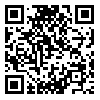







































BibTeX | RIS | EndNote | Medlars | ProCite | Reference Manager | RefWorks
Send citation to:
URL: http://journal.iehfs.ir/article-1-49-en.html

 , Leila Rastegar1
, Leila Rastegar1 
 , Sattar Hosseini1
, Sattar Hosseini1 
 , Hadi Daneshmandi *
, Hadi Daneshmandi * 
 2, Alireza Choobineh1
2, Alireza Choobineh1 
 , Abolfazl Mohammadbeigi3
, Abolfazl Mohammadbeigi3 

2- Shiraz University of Medical Sciences , daneshmand@sums.ac.ir
3- Qom University of Medical Sciences
Introduction: The maximum aerobic capacity (VO2-max) can be used to assess the cardio-respiratory condition and fit the physiological characteristics of workers to the work. This study was conducted to determine the correlation between the two methods of estimating the maximum aerobic capacity and its affecting factors among students of Shiraz University of Medical Sciences.
Materials and Methods: In this cross-sectional study, 104 students (54 males and 50 females) participated voluntarily (age ranged from 18 to 28 years). The subjects were assessed by step test according to Åstrand and ACSM protocols. The data collecting tool was a questionnaire including separate sections of demographic (age, sex, etc.), anthropometric (height, weight and BMI) and physiological (VO2-max) characteristics.
Results: The results revealed that the maximum aerobic capacity estimated from Åstrand and ACSM protocols were 3.21 (0.825) and 3.13 (0.707) l.min-1, respectively. Pearson correlation test showed high correlation between estimated maximum aerobic capacity via two protocols of Åstrand and ACSM (r=0.958). Meanwhile, there were significant associations among maximum aerobic capacity with weight, height, BMI and the number of hours of exercise per week.
Conclusion: The two methods for estimating the maximum aerobic capacity (Åstrand and ACSM) were highly correlated. Variables such as weight, height, BMI, and number of hours of exercise per week can be named as effective factors on VO2-mReceived: 2013/12/29 | Accepted: 2014/03/12 | ePublished: 2014/03/13
| Rights and permissions | |
 |
This work is licensed under a Creative Commons Attribution-NonCommercial 4.0 International License. |




